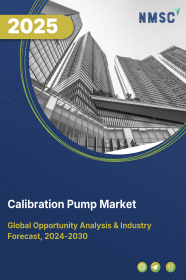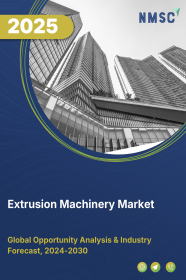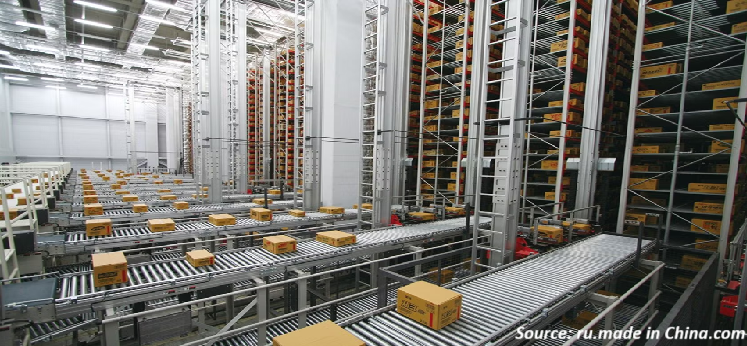
Hydraulic Cylinders Market by Product Type (Tie-Rod Cylinders, Single Acting Cylinders, and Others), by Bore Size (0–50 MM, 50–150 MM, and others), by Function (Single-Acting and Double-Acting), by Specification (Welded, Tie Rod, and Others), by Application (Industrial Equipment (Press Machines and Others) and Mobile Equipment (Off-highway Machinery and Others)), and by End-User Industry (Construction, Agriculture and Others) – Global Opportunity Analysis and Industry Forecast, 2025–2030
US Tariff Impact on Hydraulic Cylinders Market
Trump Tariffs Are Reshaping Global Business
Hydraulic Cylinders Market Overview
The Global Hydraulic Cylinders Market size was valued at USD 13.44 billion in 2024 is expected to be valued at USD 14.07 billion by the end of 2025. The industry is further predicted to reach USD 17.69 billion by 2030 with a CAGR of 4.7% from 2025 to 2030.
The hydraulic cylinders market is primarily driven by their universal applications across diverse industries. These essential components deliver linear motion and force in a wide range of applications, from heavy machinery in construction and agriculture to industrial automation systems. Their use in equipment such as excavators, loaders, and robotic arms spans sectors like material handling, transportation, and mining, ensuring a steady demand. The ability of hydraulic cylinders to provide high power in a compact design makes them indispensable in operations requiring strong, reliable performance. Moreover, technological advancements, including smart hydraulic cylinder integration, market consolidation, and strategic expansion by key players, further bolster the growth potential. However, the market faces environmental and regulatory pressures, particularly regarding sustainability, as the need for more eco-friendly solutions and energy-efficient systems rises. Despite these challenges, the market’s continued innovation and the development of smart hydraulic technology present significant growth opportunities.
The Universal Applications of Hydraulic Cylinders in Various Industrial Sectors Drives the Market Growth
One of the key drivers for the hydraulic cylinders market is their wide-ranging use across multiple industries. These components are essential for delivering linear motion and force in various applications, including heavy machinery in construction and agriculture, manufacturing systems, and industrial automation. Hydraulic cylinders are commonly used in equipment such as excavators, loaders, tractors, harvesters, press machines, and robotic arms. Their presence spans sectors like material handling, transportation, energy, and mining, ensuring steady demand. Their ability to deliver high power in a compact design makes them critical for operations requiring strong and reliable mechanical performance, reinforcing their role in the fluid power industry.
Technological Advancements and Product Innovation Boosts the Market Growth
The market trends in the hydraulic cylinders market is strongly influenced by ongoing technological advancements and product innovation. Efforts are focused on improving performance, efficiency, durability, and service life. Advancements in materials have resulted in stronger yet lighter cylinders, while sealing technologies have been upgraded to reduce leakage and enhance reliability. Additionally, the integration of sensors and electronic controls is enabling more precise and responsive operation. The emergence of smart hydraulic cylinders, which monitor parameters such as pressure, temperature, and position, supports predictive maintenance and system optimization. These innovations are boosting operational efficiency and driving the market’s growth potential.
Market Consolidation and Strategic Expansion by Key Players Fuels the Market Growth
The hydraulic cylinders market is witnessing growth through market consolidation and strategic expansion by key industry players. Companies are acquiring specialized firms to increase market share and enhance capabilities, as seen in transactions such as Miller Industries acquiring Southern Hydraulic Cylinder and Wipro Infrastructure Engineering acquiring Columbus Hydraulics. In parallel, firms are expanding manufacturing operations with new facilities and upgraded capacities, such as Wipro Hydraulics’ plant in Jaipur and Pennar Industries’ production expansion. These initiatives boost overall production output, encourage technology sharing, and enable broader product portfolios and competitive pricing, supporting the market’s long-term growth.
Environmental and Regulatory Pressures Hinder the Market Growth
The rising focus on environmental concerns and sustainability is emerging as a key restraint for the hydraulic cylinders market. Traditional petroleum-based hydraulic fluids pose environmental risks in case of leakage, driving demand for biodegradable and eco-friendly alternatives. Moreover, evolving regulations and shifting customer expectations are prompting the adoption of energy-efficient hydraulic systems with lower emissions and minimal leakage. These sustainability trends require significant investment in research and development for new materials, efficient system designs, and advanced leak-prevention technologies, presenting both financial and operational challenges for manufacturers.
Integration of Smart Hydraulic Cylinder Technology Creates Opportunity for Market Growth
A significant opportunity in the hydraulic cylinders market lies in the development and integration of smart hydraulic cylinder technology. These advanced systems combine sensors, microprocessors, and communication tools to deliver real-time insights into performance, condition, and potential failures. By enabling predictive maintenance and system optimization, smart cylinders help reduce downtime and improve operational efficiency. For instance, they can detect pressure or temperature anomalies early, preventing equipment failure. This added intelligence increases reliability, simplifies maintenance, and strengthens the competitive edge of hydraulic systems. Companies investing in smart cylinder innovation are well-positioned to expand their market presence and capitalize on emerging demand across various industrial sectors.
For example, in 2023, Bosch Rexroth introduced an innovative smart hydraulic cylinder solution that integrates advanced sensors and predictive maintenance capabilities. This new product is designed to monitor key parameters such as pressure, temperature, and load, providing real-time insights into the operational health of hydraulic systems. By detecting early signs of potential failures or inefficiencies, the system allows for proactive maintenance, significantly reducing downtime and maintenance costs.
Market Segmentations and Scope of the Study
The hydraulic cylinders market report is segmented on the basis of product type, bore size, function, specification, application, end-user industry, and region. On the basis of product type, the market is divided into tie-rod cylinders, single-acting cylinders, double-acting cylinders, nested cylinders, rotating cylinders, high-tonnage cylinders, and others. On the basis of bore size, the market is categorized into 0–50 mm, 50–150 mm, and 150 mm and more. On the basis of function, the market is segmented into single-acting and double-acting. Based on specification, the market is divided into welded, tie rod, telescopic, mill type, and others. On the basis of application, the market is classified into industrial equipment and mobile equipment. Industrial equipment is further segmented into press machines, plastic injection molding machines, material handling, and machine tools. Mobile equipment is further segmented into off-highway machinery, material handling, marine & offshore, and others. On the basis of end-user industry, the market is segmented into construction, agriculture, aerospace & defense, automotive, oil & gas, and others. Regional breakdown and analysis of each of the aforesaid segments include regions comprising North America, Europe, Asia-Pacific, and RoW.
Geographical Analysis
The North American hydraulic cylinders industry is actively evolving, particularly through market consolidation. Miller Industries' acquisition of Southern Hydraulic Cylinder, a North American company, and Wipro Infrastructure Engineering's purchase of Columbus Hydraulics highlight strategic efforts to enhance market presence and expand capabilities in the region. These acquisitions demonstrate a mix of organic and inorganic growth, positioning North America as a dynamic market with significant growth potential.
The European market is marked by established players and continuous innovation, with companies like Danfoss and Liebherr at the forefront. Liebherr's focus on developing next-generation hydraulic cylinders underscores Europe's emphasis on performance and efficiency improvements. Although detailed market data is sparse, the strong presence of key manufacturers suggests that the European market is mature but still evolving, with ample growth opportunities.
The Asia-Pacific region is increasingly becoming a key player in the hydraulic cylinders market, driven by substantial investments and developments. Wipro Infrastructure Engineering's acquisition of Columbus hydraulics and the establishment of a new manufacturing facility in Jaipur, India, demonstrate the region's rising influence. Furthermore, Pennar Industries' expansion plans and new GB standards for hydraulic cylinders in China reflect the region's commitment to enhancing production capabilities and adapting to regulatory changes. These factors highlight the Asia-Pacific region's high growth potential and expanding market size.
While the North American, European, and Asia-Pacific regions dominate, there is evidence of global activity within the hydraulic cylinders industry, including in the Rest of the World (RoW) market. For instance, Hyva's launch of the Beta Small Body Rear Loader indicates ongoing product development and market reach beyond the primary regions. The diverse applications of hydraulic cylinders across sectors like construction, agriculture, and manufacturing suggest a global demand for these products, with significant opportunities in RoW.
Strategic Expansion and Innovation in the Hydraulic Cylinders Industry
Key players in the hydraulic cylinders industry are actively pursuing strategies to strengthen their market presence and capitalize on emerging growth opportunities. A notable approach is market consolidation through acquisitions, such as Miller Industries' acquisition of Southern Hydraulic Cylinder in North America, and Wipro Infrastructure Engineering's purchase of Columbus Hydraulics, reflecting cross-regional expansion and a drive to increase market share. Additionally, companies are focusing on organic growth through strategic investments in manufacturing capabilities, with Wipro Hydraulics opening a new facility in India and Pennar Industries expanding its hydraulic cylinder capacity, highlighting the region's growing industry size. Technological innovation is another key strategy, with companies like Liebherr leading efforts to develop next-generation hydraulic cylinders aimed at improving performance. Furthermore, the rise of "smart cylinder technology," integrating sensors and digital capabilities for enhanced efficiency and condition monitoring, represents a significant advancement.
However, the industry faces challenges, including the need to adapt to evolving regulatory standards, such as the new GB standards in China, and the competitive pressure posed by the increasing interest in electric actuators as potential substitutes for hydraulic cylinders. Despite these hurdles, opportunities abound in high-demand sectors like construction, agriculture, and industrial applications, particularly in high-growth regions such as Asia-Pacific. Moreover, the growing focus on sustainability and the adoption of eco-friendly solutions, such as biodegradable hydraulic fluids, offers significant opportunities for companies to meet market demand for environmentally conscious products. These strategies and developments highlight a dynamic market with considerable growth potential, despite ongoing challenges.
KEY BENEFITS
-
The report provides quantitative analysis and estimations of the hydraulic cylinders market from 2025 to 2030, which assists in identifying the prevailing market opportunities.
-
The study comprises a deep dive analysis of the hydraulic cylinders market including the current and future trends to depict prevalent investment pockets in the market.
-
Information related to key drivers, restraints, and opportunities and their impact on the hydraulic cylinders market is provided in the report.
-
Competitive analysis of the players, along with their market share is provided in the report.
-
SWOT analysis and Porters Five Forces model is elaborated in the study.
-
Value chain analysis in the market study provides a clear picture of roles of stakeholders.
Hydraulic Cylinders Market Key Segments
By Product Type
-
Tie-Rod Cylinders
-
Single Acting Cylinders
-
Double Acting Cylinders
-
Nested Cylinders
-
Rotating Cylinders
-
High Tonnage Cylinders
-
Others
By Bore Size
-
0–50 MM
-
50–150 MM
-
150 MM and More
By Function
-
Single-Acting
-
Double-Acting
By Specification
-
Welded
-
Tie Rod
-
Telescopic
-
Mill Type
-
Others
By Application
-
Industrial Equipment
-
Press Machines
-
Plastic Injection Molding Machines
-
Material Handling
-
Machine Tools
-
-
Mobile Equipment
-
Off-highway Machinery
-
Material Handling
-
Marine & Offshore
-
Others
-
By End-User Industry
-
Construction
-
Agriculture
-
Aerospace & Defense
-
Automotive
-
Oil & Gas
-
Others
By Region
-
North America
-
The U.S.
-
Canada
-
Mexico
-
-
Europe
-
The UK
-
Germany
-
France
-
Italy
-
Spain
-
Denmark
-
Netherlands
-
Finland
-
Sweden
-
Norway
-
Russia
-
Rest of Europe
-
-
Asia Pacific
-
China
-
Japan
-
India
-
South Korea
-
Australia
-
Indonesia
-
Singapore
-
Taiwan
-
Thailand
-
Rest of Asia Pacific
-
-
RoW
-
Latin America
-
Middle East
-
Africa
-
Key players
-
Apex Hydropneumatic
-
Zenith Hydromatic
-
Larsen & Toubro Limited
-
Achieve Hydraulics and Pneumatics Pvt Ltd
-
Bosch Rexroth
-
Eaton Corporation Plc.
-
Wipro Infrastructure Engineering
-
Enerpac Tool Group
-
KYB Americas Corporation
-
Parker-Hannifin Corporation
-
HPS International
-
SMC Corporation
-
Suvera
-
ISMT Limited
-
Dynamic Hydraulics
REPORT SCOPE AND SEGMENTATION
|
Parameters |
Details |
|
Market Size in 2024 |
USD 13.44 Billion |
|
Revenue Forecast in 2030 |
USD 17.69 Billion |
|
Growth Rate |
CAGR of 4.7% from 2026 to 2030 |
|
Analysis Period |
2024–2030 |
|
Base Year Considered |
2024 |
|
Forecast Period |
2025–2030 |
|
Market Size Estimation |
Billion (USD) |
|
Growth Factors |
|
|
Countries Covered |
28 |
|
Companies Profiled |
15 |
|
Market Share |
Available for 10 companies |
|
Customization Scope |
Free customization (equivalent up to 80 working hours of analysts) after purchase. Addition or alteration to country, regional, and segment scope. |
|
Pricing and Purchase Options |
Avail customized purchase options to meet your exact research needs. |

















 Speak to Our Analyst
Speak to Our Analyst





















